Warning: This high school grammar quiz might cause flashbacks of red pens and pop quizzes
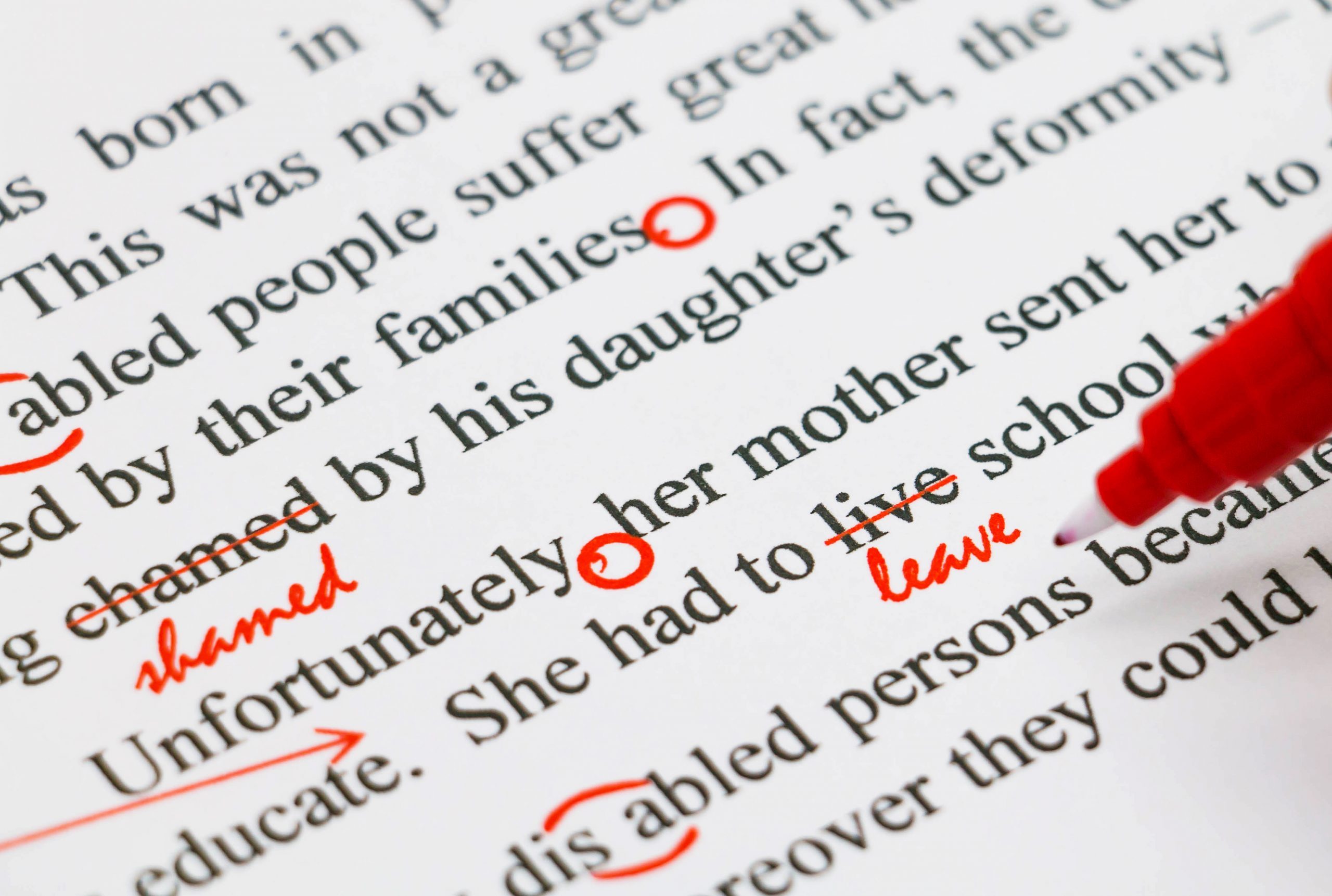
Can You Pass This High School Grammar Test?


Which of the following changes makes this sentence correct?
“The kids who meet up at the playground to play on the swings, climb on the jungle gym and try the monkey bars.”
A. The kids who meet up at the playground, play on the swings, climb on the jungle gym and try the monkey bars.
B. The kids meet up at the playground to play on the swings, climb on the jungle gym and try the monkey bars.
C. The kids meeting up at the playground to play on the swings, climb on the jungle gym and try the monkey bars.

Answer:
B. The kids meet up at the playground to play on the swings, climb on the jungle gym and try the monkey bars.
The issue with the first sentence is that the word who creates a clause with a subject but no corresponding verb, so the sentence is actually a sentence fragment. Removing who changes it so that the kids is the subject and meet is the verb.

Which sentence is grammatically incorrect?
A. Me and my sister went to see our little brother’s high school graduation.
B. John and I are going to treat you all to dinner tonight.
C. Can you meet Sarah and me at Target later?

Answer:
A. Me and my sister went to see our little brother’s high school graduation.
Choosing between I and me can be tricky, especially since people are very quick to correct anyone who says “… and me” with “… and I.” But sometimes, as in Choice C, “… and me” is correct. It depends on whether the first-person pronoun is part of the subject or the object.
An easy trick to figure it out is to remove the other person and see if me or I sounds better. In Choice A, “Me went to see my little brother’s high school graduation” doesn’t make sense, so it should be “My sister and I.” In Choice C, though, “Can you meet me at Target later?” does make sense.

Which sentence uses commas correctly?
A. No, I don’t think it’s a good idea to start your essay the day before it’s due.
B. I ate an ice cream cone, and a piece of cake.
C. I’m bringing my favorite snacks, bug spray and a beach chair.

Answer:
A. No, I don’t think it’s a good idea to start your essay the day before it’s due.
A comma should be after the word No to separate it from the clause that follows. In Choice B, you don’t need a comma because “and a piece of cake” is an object of the sentence, not a new clause (it has no subject or verb). You also don’t need a comma when listing only two items. (“I ate an ice cream cone, a piece of cake, and some cotton candy” does need, at the very least, a comma after the word cone, since it’s a longer list.) As for Choice C, you definitely need a comma after “bug spray”—unless the “favorite snacks” you’re referring to are bug spray and a beach chair, two things that are definitely not edible!

Which sentence uses an apostrophe correctly?
A. Please pick up some banana’s at the grocery store.
B. Who’s cell phone is on the table here?
C. Please fill the cats’ food bowl—Tiger and Fluffy won’t stop meowing at me!
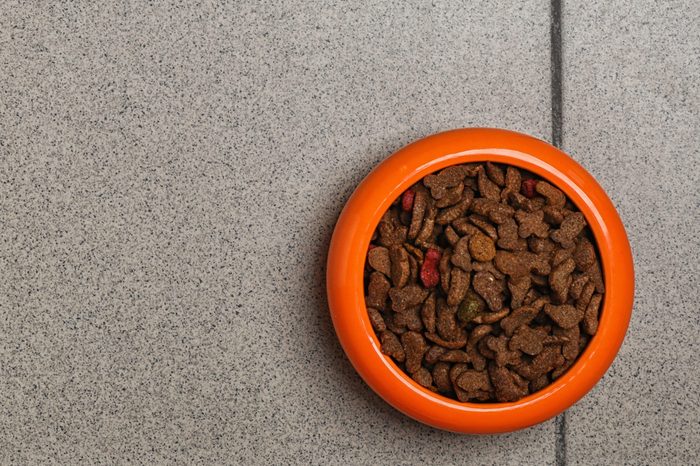
Answer:
C. Please fill the cats’ food bowl—Tiger and Fluffy won’t stop meowing at me!
Choice A doesn’t need that apostrophe—banana just needs an S to make it plural, not an apostrophe and an S, which would make it possessive. The first word in Choice B should be whose, not who’s, since who’s is a contraction of “who is.”
As for Choice C, the apostrophe is correct here because “Tiger and Fluffy” makes it clear that there is more than one cat—so the possessive apostrophe should, indeed, be after the S. (By the way, Choice C uses the apostrophe in won’t correctly too!)
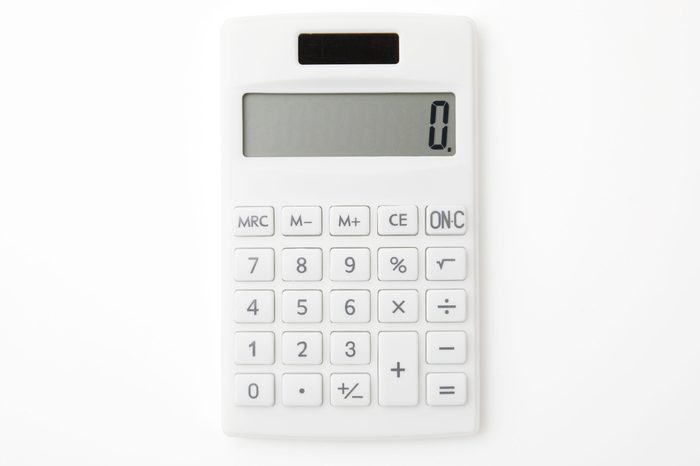
Which sentence about quantity is incorrect?
A. I finished the race in less time than I did last year.
B. He scored less points than I did in Pac-Man.
C. There are fewer cookies than there were yesterday; do you know anything about that?
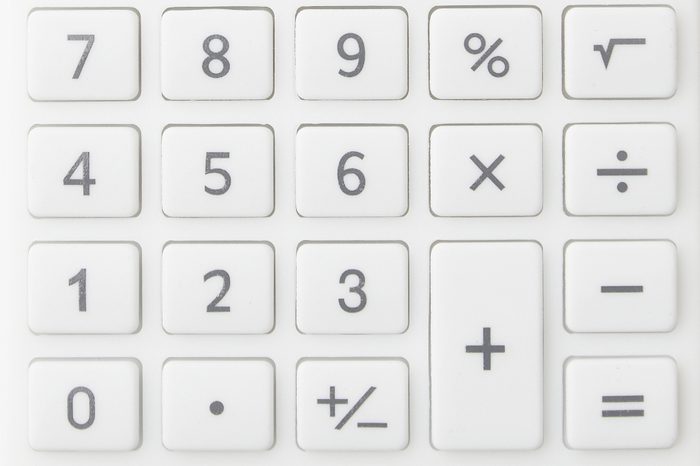
Answer:
B. He scored less points than I did in Pac-Man.
The less vs. fewer rule trips up a lot of people. You use the word fewer for a quantity that’s countable, like “cookies”—or Choice B’s “points.” Use the word less when the quantity you’re referring to is general, unspecific or uncountable, like “time” or “money.” (Choice A does this correctly.) So you would correctly say “less time” and “less money,” but “fewer hours” and “fewer dollars.”
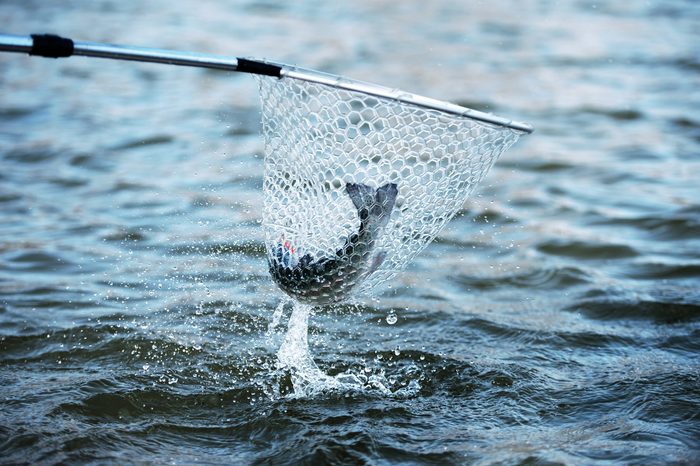
Identify the error in the following sentence:
It’s actually more challenging to catch a fish with a net than catching one with a fishing rod.
A. It’s
B. More challenging
C. Catching

Answer:
C. Catching
As written, this sentence is not parallel—the two verbs should be the same form, but they’re not. The correct sentence would be “It’s actually more challenging to catch a fish with a net than to catch one with a fishing rod,” so that both of the verbs are infinitives and therefore match.

Which of the following changes makes this sentence correct?
“Attracting thousands of visitors every year, people who go to Disney World love its incomparable theme park experience.”
A. Attracting thousands of visitors every year, Disney World is beloved for its incomparable theme park experience.
B. Attracting thousands of visitors every year, people go to Disney World for its incomparable theme park experience.
C. Disney World attracts thousands of visitors every year, people who go to Disney World love its incomparable theme park experience.

Answer:
A. Attracting thousands of visitors every year, Disney World is beloved for its incomparable theme park experience.
If you recognized that the example sentence has a misplaced modifier, you’re a true grammar aficionado! When you begin a sentence with a present participle of a verb (attracting, in this case), you need to make sure that the subject of the sentence is what’s doing the action the verb describes. As is, the sentence implies that the people are attracting thousands of visitors, not Disney World itself.

Which sentence uses quotation marks correctly?
A. He asked me, “Do you believe in ghosts”?
B. I could hear her yelling “This place is awesome!” from all the way across the campground.
C. The lemonade stand on Fifth and Main has the “best” lemonade!

Answer:
B. I could hear her yelling “This place is awesome!” from all the way across the campground.
Quotation marks can be tricky: Which punctuation marks go inside the quotes? When should you put a phrase in quotes? Question marks and exclamation points go inside quotations only if the text inside them is a question or an exclamation (respectively). For instance, the question mark in Choice A should be inside the quotes, because the section in quotes (“Do you believe in ghosts?”) is a question, while the full sentence is not. Choice B does this correctly, with the whole exclamation (“This place is awesome!”) in the quotes, including the exclamation point. In addition, quotation marks should not be used to add additional emphasis to something, as in Choice C.

Which sentence uses a semicolon correctly?
A. We’re going to the beach tomorrow; so you should pack your bathing suit.
B. I’m going to bring chips; Oreos, my favorite type of cookie; and lemonade.
C. The beach, which is called Mayflower; is supposed to be one of the nicest ones on Cape Cod.

Answer:
B. I’m going to bring chips; Oreos, my favorite type of cookie; and lemonade.
The semicolon is the bane of many a writer! A semicolon’s primary purpose is to separate two independent clauses—that could function as complete sentences on their own—when keeping them together improves flow, either because the clauses are short or the ideas are closely related.
In Choices A and C, “So you should pack your bathing suit” and “Is supposed to be one of the nicest ones on Cape Cod” cannot be complete sentences. The first is a dependent clause, and the second is a verb phrase with no subject, so they should be separated from the rest of their sentences by a comma, not a semicolon.
Choice B presents another important function of semicolons, though, and this sentence uses them correctly. You should use a semicolon, rather than a comma, to separate items in a list if one or more of the items in the list already has a comma in it. In Choice B, “Oreos, my favorite type of cookie” is a single item in a list, but it contains a comma. So the semicolons should be there to make the separate items in the list clearer; if there were only commas, it would be difficult to distinguish the separate list items.
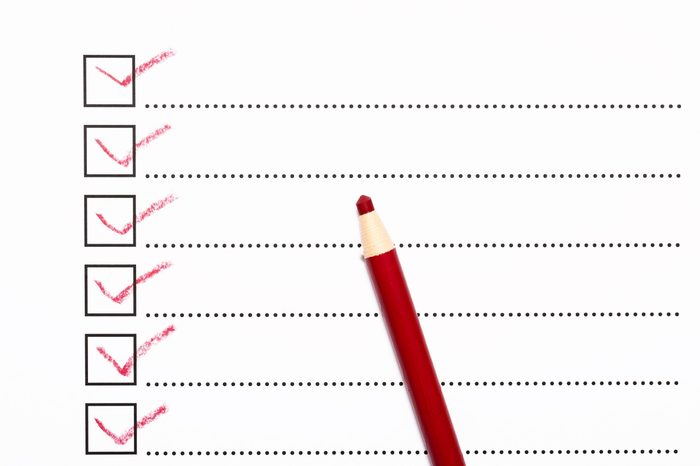
True or false?
I.e. is an abbreviation that means “for example,” and you use it to introduce a list.

Answer:
False! E.g., not i.e., means “for example” (from the Latin exempli gratia), and it’s very easy to mix up the two. As for i.e., this abbreviation actually means id est, or “that is.” You use i.e. to explain something another way or clarify something, not to introduce a list. For instance, you could say, “I’ll get back to you soon, i.e., by the end of the day tomorrow.” You’re clarifying what you mean by “soon.”

Which of the following sentences is correct?
A. He carefully laid the painting on the table to inspect it.
B. She lied down in her room to unwind after her workout.
C. They told their dog to go lay down so he wouldn’t bother the guests.

Answer:
A. He carefully laid the painting on the table to inspect it.
Lay and lie are two of the most easily confused words in English—and we totally understand why. Lay means to place something down, and it must have an object. Its past tense form is laid, as correctly used in Choice A.
Lie is the more commonly used of the two verbs. It doesn’t take an object, and it means “to be in a horizontal position.” Choice B is incorrect because lied is the past tense of the version of the word that means “to tell a lie,” but the past tense of the “lie down” version is lay. Choice C is incorrect because it should be in the present tense, so it should say “lie down,” not “lay down.”

Identify the conjunction in the following sentence:
There are lots of flowers in the park; however, you can see them only at certain times of the year.
A. In
B. However
C. Only

Answer:
B. However
Transition and connecting words like however, because and so are conjunctions. In is a preposition, because it describes a spatial or positional relationship, and only is an adverb, because it modifies a prepositional phrase (“at certain times” in this sentence).

Which sentence is correct?
A. There’s a sneak peak of the new movie being released tomorrow!
B. The show is now in its seventh successful year on Broadway.
C. She’s training everyday so that she’ll be ready to run the marathon.

Answer:
B. The show is now in its seventh successful year on Broadway.
No, that its doesn’t need an apostrophe—here its is showing possession, not acting as a contraction of “it is.”
As for the other choices, Choice A uses the form of peak that describes the top of a mountain; a peek means a quick glimpse or look. And Choice C uses everyday as one word when, in this sentence, it should be two words, since it means the same thing as “each day.”
So, how did you do on this high school grammar quiz? Hopefully your skills are still making your English teacher proud.
Why trust us
At Reader’s Digest, we’re committed to producing high-quality content by writers with expertise and experience in their field in consultation with relevant, qualified experts. We rely on reputable primary sources, including government and professional organizations and academic institutions as well as our writers’ personal experiences where appropriate. We verify all facts and data, back them with credible sourcing and revisit them over time to ensure they remain accurate and up to date. Read more about our team, our contributors and our editorial policies.
















